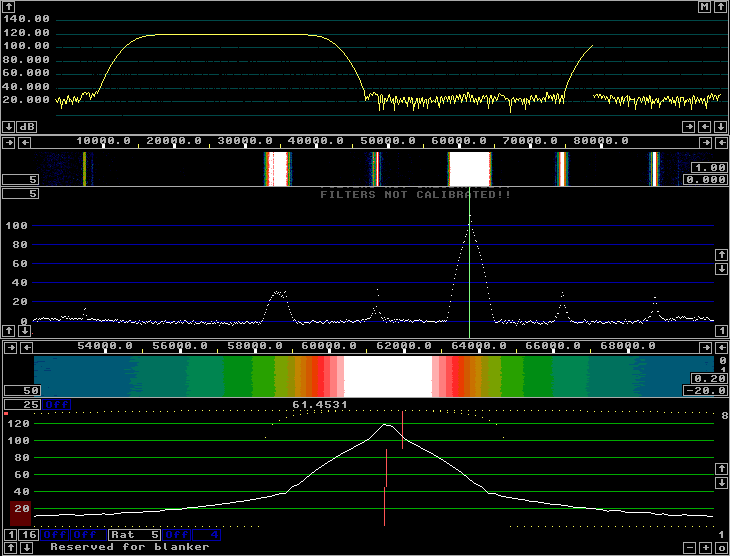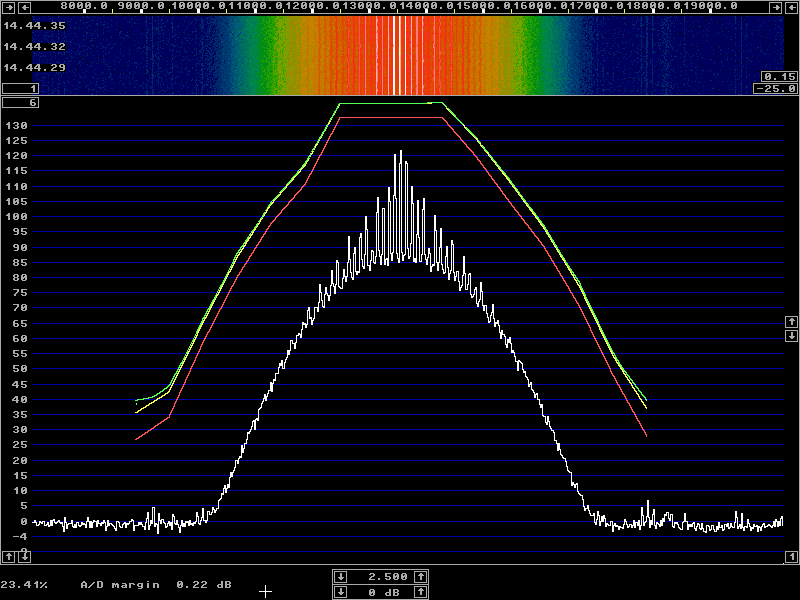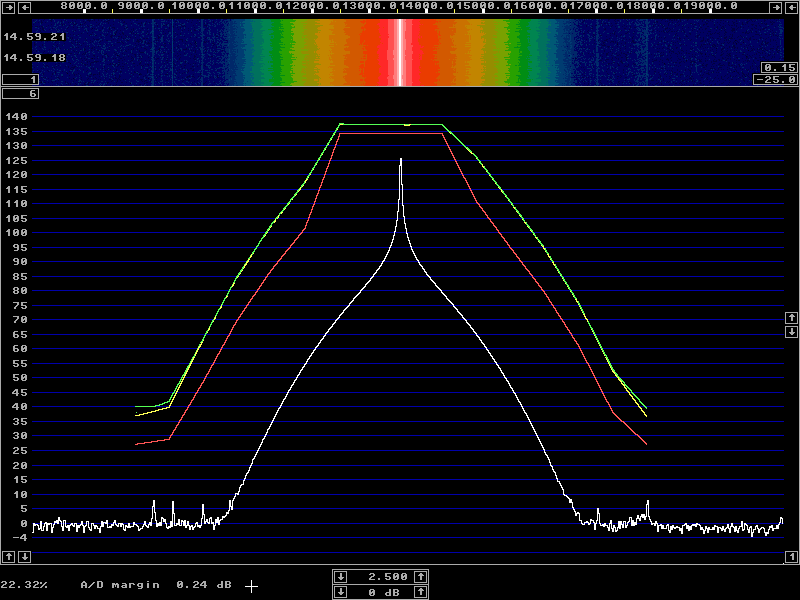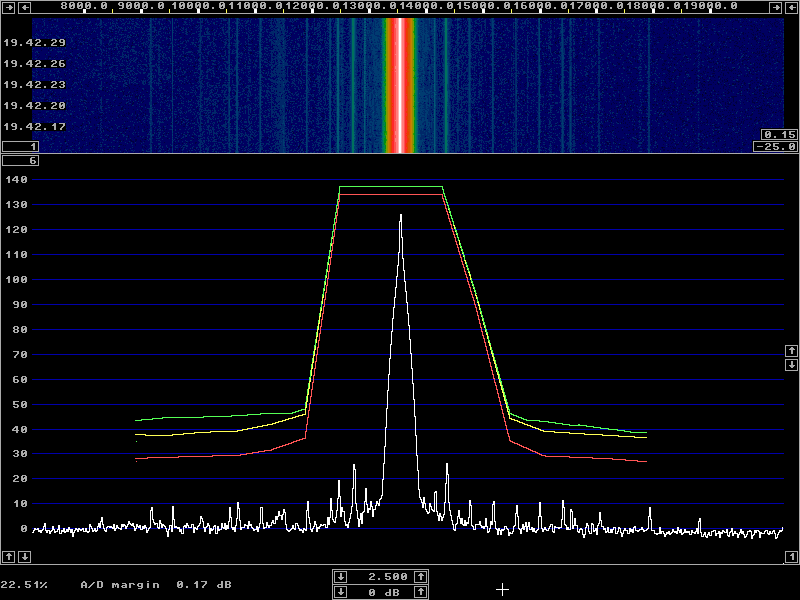
Switch time and bandwidth.Radio waves travel at the speed of light, 300000 km/s. That means that a reflection from an object 150 km away will return to the antenna after one millisecond. The PIN diodes UM9415 which are useful on HF as well as on VHF have a recovery time of about 2 ms so if the CW turn off waveform lasts 2 ms and then the diodes switch in 2 ms one will be able to see reflections from 600 km away and longer.Linrad uses the best possible waveform for the switching, the error function erf(x). With a switch time from full power to zero, while keying at 100 Hz, gives a bandwidth of about 3 kHz as one can see in figure 1 which is the Linrad screen of one computer with an RX2500 listening at 2.513 kHz while another computer that has a keyed 5 kHz tone into its microphone input sends CW through a Delta 44 and a TX2500. The time constant (time from zero to full power) is set to 2 ms in figure 1. The error function goes from 1.0 to 0.5 in 1 ms and from 0.5 to zero in one more ms as can be seen in the S-meter graph. |

|
|
Fig 1. CW dots at 100 Hz (220 wpm) generated with a keyed tone and received at 2.5 MHz on another computer. In figure 2 the signal of figure 1 is shown with the receiving computer in "Tx test mode". The individual keying sidebands are separated by 100 Hz because that is the keying speed. The average power is about 3 dB below the peak power because the duty is about 50%. The carrier is 120 dB above the noise floor and the keying noise reaches the noise floor 3.5 khz away from the carrier. Figure 3 shows the spectrum at a normal keying speed, 10 Hz. The carrier and principal keying sidebands are no longer resolved so the signal is 6 dB stronger than in figure 2. The peak power is another 3 dB higher. The time constant is 2 ms. As expected, the signal becomes 10 times narrower when the time constant is made 10 times longer. This is shown in figure 4. Here various spurs from the Delta44 are visible even though they are rather weak. |

|
|
Fig 2.As figure 1, but with high resolution in tx test mode. |

|
|
Fig 3.Here the keying speed is reduced to 10 Hz. Otherwise the same as figure 2. |

|
|
Fig 4.The keying speed is 10 Hz and a suitable time constant of 20 ms is selected. |